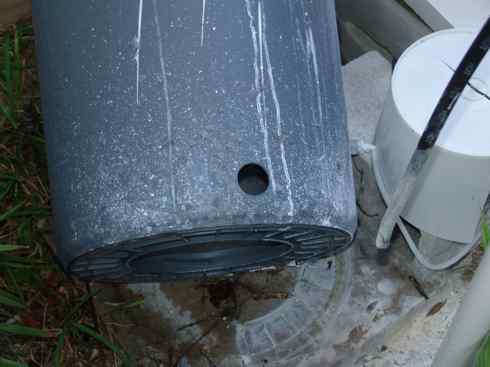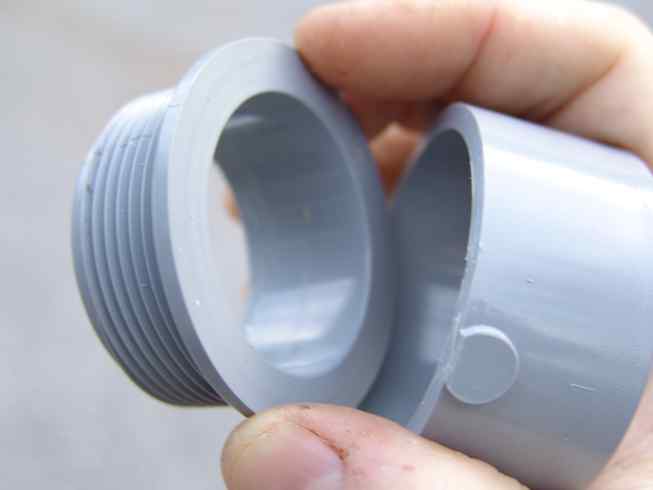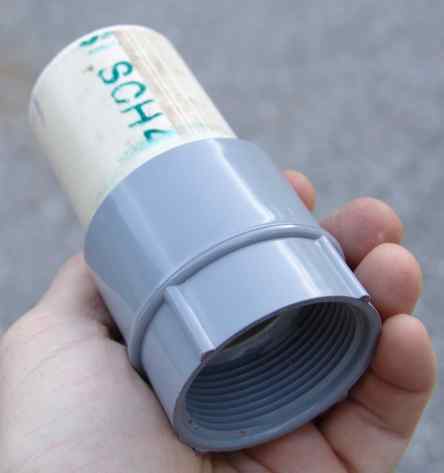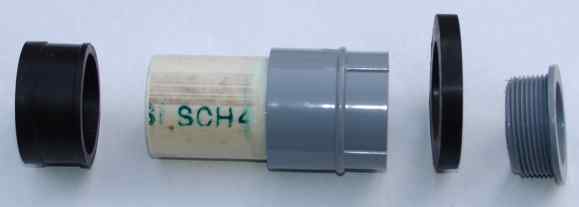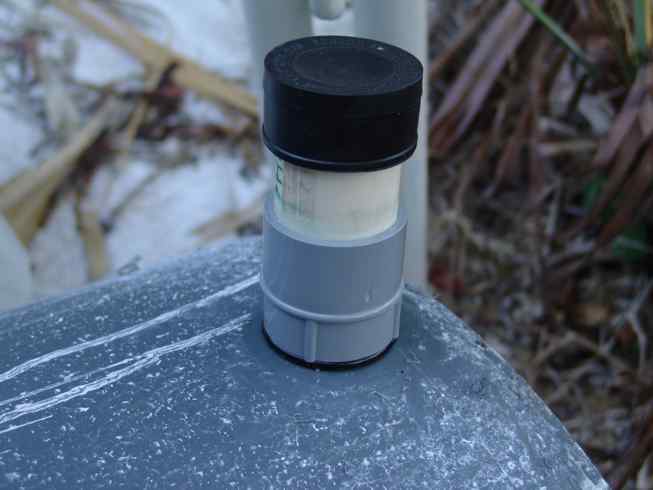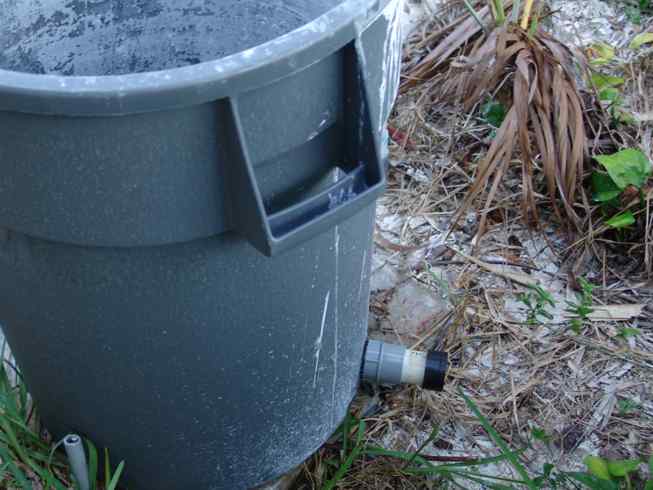saltn00b
Active Member
An Improvised PVC Bulkhead Fitting for Liquid Storage Tanks
Rugged
Compatible with and Inert to Most Chemicals
Impervious to Weather
Made from Common Hardware
Very Inexpensive
A "bulkhead fitting" is an unusual item of plumbing designed to pass a connection through the sealed wall of a vessel. While there are a lot of household and industrial applications for them, you won't find bulkhead fittings at Home Depot. Speciality sources on the Web want $10 or $20 for what should cost pennies. I will show you below how you can easily and inexpensively improvise PVC bulkhead fittings from common parts from the hardware store.
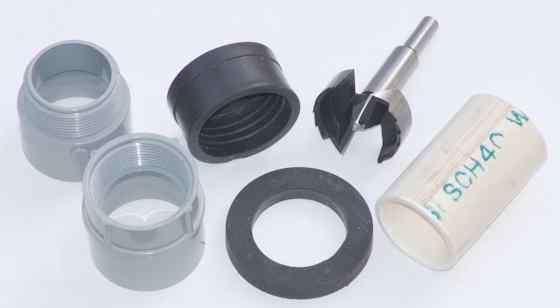
This example shows the construction of a 1-1/2" PVC pipe bulkhead fitting, which will be installed on the side of a 44-gallon vessel. Smaller sizes down to 1/2" can be made in the same way.
The essential item in constructing a bulkhead fitting is a male-female pair of straight-threaded adapters, which can tighten to form a clamp on both sides of the vessel wall. Since all threaded adapters in ordinary plumbing use tapered threads ("NPT", an abbreviation for American National Standard Taper Pipe Threads), plumbing fittings will not work. However, PVC electrical conduit fittings use straight, not tapered, threads, while the electrical conduit adapters use standard plumbing pipe sizes for glued joints. The PVC material is the same for plumbing or conduit, and as chemically versatile, just being colored gray in the case of the electrical items.
In short, plastic electrical conduit fittings are the secret ingredient to improvising a bulkhead fitting.
The necessary components are shown in the photo, from left to right: the 1-1/2" PVC male and female electrical conduit adapters, a 1-1/2" Fernco rubber pipe cap, a Buna-N rubber drain gasket (sold as an item of bathtub drain hardware), a 1-7/8" Forstner drill bit (which is just a bit smaller than the outside of the conduit fitting threads), and a short stub piece of 1-1/2" PVC pipe. We will use the pipe stub and rubber cap to make this bulkhead fitting into a drain.
For a vessel, we will use nothing more than a Rubbermaid Brute polyethylene drum, another "secret ingredient", which makes an excellent liquid storage tank, but is disguised as a trash can at the store. The polyethylene material is compatible with many difficult solutions like caustics and acids. The "Brute" brand is quite sturdy, having been designed to take curbside abuse. If you were to purchase a polyethylene chemical tank of that size from a plastics or laboratory equipment supplier, you would pay many $100s, not to mention an unwieldly shipment problem. Instead we'll use the Rubbermaid item, readily available at hardware stores like Home Depot or Lowes, and priced at about $25 for the 32-gallon size. The PVC fittings and gasket are only a few dollars more.
Rugged
Compatible with and Inert to Most Chemicals
Impervious to Weather
Made from Common Hardware
Very Inexpensive
A "bulkhead fitting" is an unusual item of plumbing designed to pass a connection through the sealed wall of a vessel. While there are a lot of household and industrial applications for them, you won't find bulkhead fittings at Home Depot. Speciality sources on the Web want $10 or $20 for what should cost pennies. I will show you below how you can easily and inexpensively improvise PVC bulkhead fittings from common parts from the hardware store.

This example shows the construction of a 1-1/2" PVC pipe bulkhead fitting, which will be installed on the side of a 44-gallon vessel. Smaller sizes down to 1/2" can be made in the same way.
The essential item in constructing a bulkhead fitting is a male-female pair of straight-threaded adapters, which can tighten to form a clamp on both sides of the vessel wall. Since all threaded adapters in ordinary plumbing use tapered threads ("NPT", an abbreviation for American National Standard Taper Pipe Threads), plumbing fittings will not work. However, PVC electrical conduit fittings use straight, not tapered, threads, while the electrical conduit adapters use standard plumbing pipe sizes for glued joints. The PVC material is the same for plumbing or conduit, and as chemically versatile, just being colored gray in the case of the electrical items.
In short, plastic electrical conduit fittings are the secret ingredient to improvising a bulkhead fitting.
The necessary components are shown in the photo, from left to right: the 1-1/2" PVC male and female electrical conduit adapters, a 1-1/2" Fernco rubber pipe cap, a Buna-N rubber drain gasket (sold as an item of bathtub drain hardware), a 1-7/8" Forstner drill bit (which is just a bit smaller than the outside of the conduit fitting threads), and a short stub piece of 1-1/2" PVC pipe. We will use the pipe stub and rubber cap to make this bulkhead fitting into a drain.
For a vessel, we will use nothing more than a Rubbermaid Brute polyethylene drum, another "secret ingredient", which makes an excellent liquid storage tank, but is disguised as a trash can at the store. The polyethylene material is compatible with many difficult solutions like caustics and acids. The "Brute" brand is quite sturdy, having been designed to take curbside abuse. If you were to purchase a polyethylene chemical tank of that size from a plastics or laboratory equipment supplier, you would pay many $100s, not to mention an unwieldly shipment problem. Instead we'll use the Rubbermaid item, readily available at hardware stores like Home Depot or Lowes, and priced at about $25 for the 32-gallon size. The PVC fittings and gasket are only a few dollars more.

